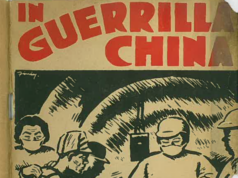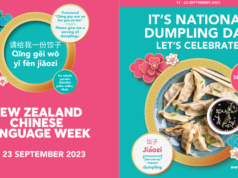
The ancient Chinese divided all things on the Earth into the five elements – fire, wood, earth, metal and water – to describe their characteristics.
The fundamental TCM book ‘Huang Di Nei Jing 黄帝内经’ or ‘The Medical Classic of the Yellow Emperor’, states that five colours, five organs, five seasons, five moods and five flavours correspond with the five elements:
Five colours – green, red, yellow, white and black;
Five organs – liver, heart, spleen, lungs and kidneys;
Five seasons – spring, summer, late summer, autumn and winter;
Five moods – anger, happiness, thinking, sad and fear;
Five flavours – sour, bitter, sweet, spicy and salty.
‘The Medical Classic of the Yellow Emperor’ says that the corresponding relationship among all the ‘fives’ provides us with hints about maintaining health in different seasons. For example, black foods are the best for winter, green foods for spring, red foods for summer, yellow foods for late summer and white foods for autumn.
Winter is the best season to store energy, and kidneys play a role in this. Poor kidneys will waste the many reinforcing foods people eat in winter. Therefore, eating more ‘black’ foods is highly recommended in winter under the five elements theory of TCM.
Modern research has found that most ‘black’ foods are rich in inorganic salt and melanin. The inorganic salt can help promote fluid metabolism and dispel toxins, while melanin can help restrict nitrosamine and thus prevent cancer.
‘Black’ foods:
Fowl, soft-shell turtle, snakehead, black beans, sesame, black fungus, mushrooms, kelp, purple seaweed and ebony.
Black beans: “Neutral’ black beans can help reinforce kidneys, boost the urinary tract, promote circulation, dispel toxins and nourish skin.
Sesame: ‘Neutral’ sesame can help reinforce the kidneys and liver thus relieving dizziness, sore bones, hair loss and grey hair.
Yellow Foods:
‘Yellow’ foods, including the potato, corn and soybeans, correspond with earth in the five elements and help to reinforce and protect the digestive system. Earth is linked with late summer, thinking, sweetness, as well as the spleen and stomach.
It is usually hot and rainy in late summer. Excessive dampness can harm the spleen and stomach and thus lead to a bad appetite. In this case, we should eat more sweet or yellow foods to help reinforce spleen energy.
‘Yellow’ foods such as soybeans and pumpkins are usually rich in vitamins A and D.
Vitamin A can help protect the lining in both digestive and respiratory systems, which helps prevent stomach inflammation and ulcers. Vitamin D can help promote the absorption of calcium and phosphorus and thus strengthening bones.
Other ‘Yellow’ foods: Oranges, pumpkin, millet.
Pumpkin: ‘Warm’ pumpkin can help reinforce energy, improve the spleen and stomach, relieve inflammation and kill pain.
Corn: ‘Neutral’ corn can help the spleen, promote appetite, help the urinary tract and dispel pathogenic heat and dampness.
‘White’ Foods:
‘White’ foods, including white fungus, turnip, lily root and pear, correspond with metal in the five elements. Metal is also connected with autumn, sadness, spiciness, as well as the lungs and large intestine.
Dry autumn brings damage to the digestive system easily, and causes coughing and a sore throat. ‘White’ foods are believed to be the best remedy for dryness in autumn. Apart from relieving coughing, they can also help nourish skin and relieve constipation through the promotion of body fluids.
‘White’ foods such as milk and fish are also recommended by nutritionists as they are usually rich in protein yet relatively low in fat.
Lily root: ‘Cold’ lily root can help nourish lungs, relieve coughing and sooth nerves.
White fungus: ‘Neutral’ white fungus can help promote fluids, nourish lungs, boost yin (cold) energy and the stomach. It is recommended to relieve coughing and constipation.
Other ‘white’ foods are almonds, ginseng, yam, Chinese cabbage and soybean milk
‘Red’ Foods:
‘Red’ foods, including carrots, hawthorn and tomatoes, are connected with fire.
Fire is also linked with summer, happiness, bitterness, the heart and small intestine.
Most ‘red’ foods or herbs are “warm.” Due to their close relation with the heart, red foods are believed to be capable of helping nourish blood, improve circulation, as well as reinforce yang (warm) energy. They are usually recommended for people with anaemia, palpitations, cold limbs, pale face and lack of strength.
Though most ‘red’ foods are “warm”, for example hawthorn, jujube, beef, cherry and saffron, there are “cold” red foods like watermelon and red beans, which are highly recommended in summer.
Modern research shows that most red foods are rich in lycopene and tannin, both of which can protect cells and prevent inflammation. Their rich micro-elements such as iron can help reinforce blood and boost the immune system, just as TCM says.
Roselle [Hibiscus rosa sabdariffa**]: “Cold” roselle is widely used to dispel pathogenic heat, relieve thirst, coughing and high blood pressure in TCM. It is also an antioxidant that helps protect the heart, blood vessels and the liver, according to modern research.
Hawthorn: “Warm” hawthorn can help boost circulation and improve digestion. It is recommended for those with indigestion, high blood fat and amenorrhea due to blood stasis.
Other ‘red’ foods are red beans, jujube, and red apple.
‘Green’ Foods:
‘Green’ foods including green vegetables and beans correspond with wood in the five elements. Wood is also linked with spring, anger, sourness, as well as the liver and gallbladder.
Liver dispels toxins from the human body. Too much alcohol and rich protein can harm the liver and cause problems in spring. There is a high relapse rate for liver ailments, especially chronic ones, in spring. Eating more green vegetables in the spring is highly recommended to protect the liver, improve eyesight and nourish blood. Greengage wine is popular among many Chinese in spring as it helps nourish the liver, promote fluids and establish a bigger appetite and better mood.
‘Green’ foods are usually rich in fibre, vitamins and chlorophyll according to modern research, which are all helpful in dispelling toxins from the body.
Spinach: “Cold” spinach can help reinforce the liver, nourish blood and dispel pathogenic heat.
Other ‘green’ foods are celery, garden chrysanthemum
(Shanghai Daily February 10, 2009)
[From http://www.china.org.cn/health/2009-02/10/content_17250976.htm. For an extract, see NZCFS Nelson branch newsletter, Aug 2017]
** Roselle (Hibiscus rosa sabdariffa) (also known as Rosella, not to be confused with the Australian parakeet, Rosella!) is a very famous plant in Indonesia, and is also grown throughout Asia.
There are many benefits of Roselle, especially for herbal treatment. The plant’s flower pod, known as frambozen has been often used to make a framboze syrup. An infusion of roselle flower sheath is known as the herbal tea drink ‘Rosella’.
Roselle flower sheath has many health purposes. Roselle contains citric acid, malic acid, anthocyanin (e.g. hibiscin), vitamin C, protein, and various flavonoids – the most interesting are flavonoids called gossypetin, hibiscetine and sabdaretine. These antioxidants are strong enough to be used against free radicals, which damage the human body. [Information received from Dr Joan Campbell]




